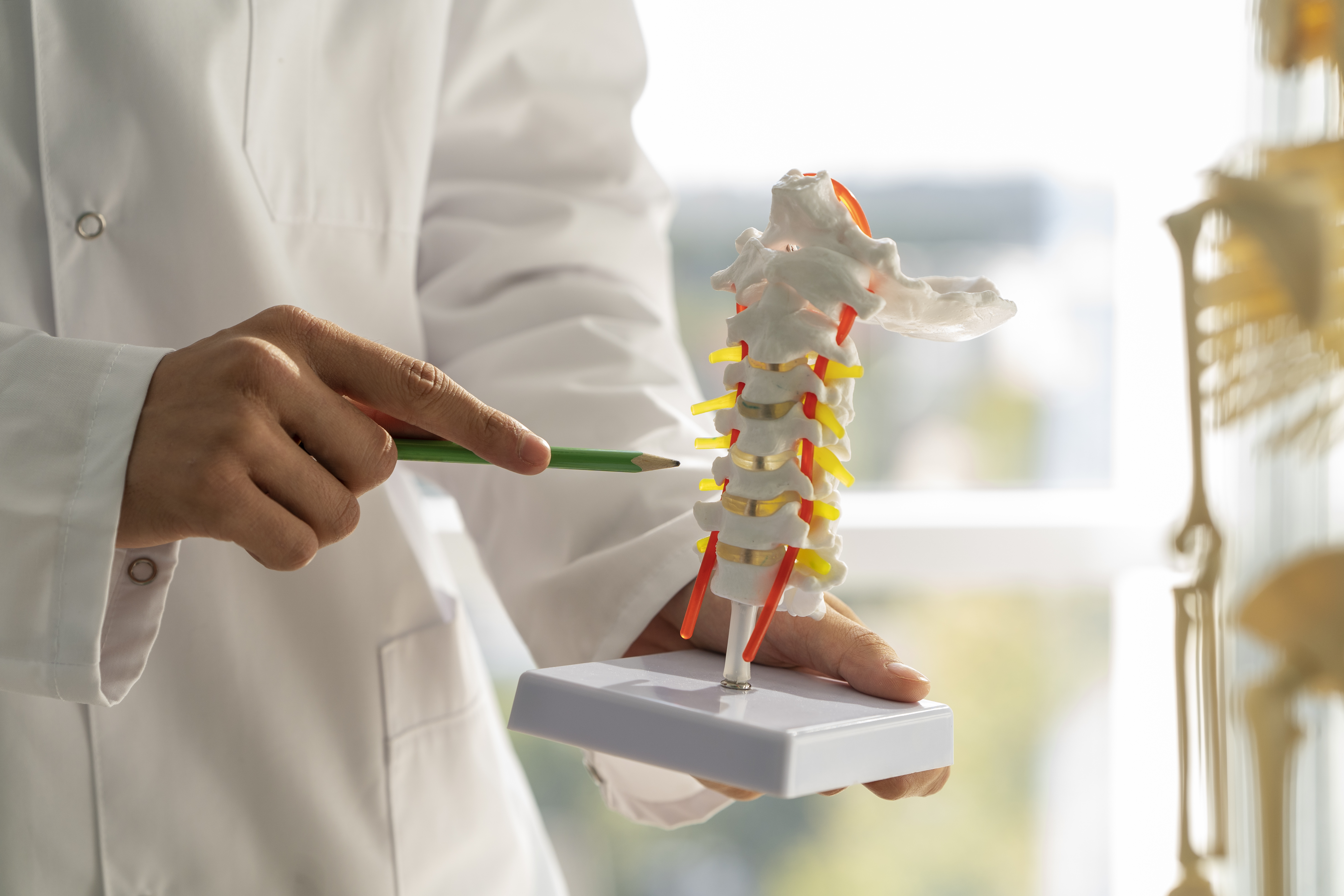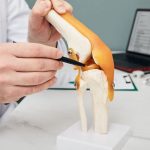This Injury Insight session provides an in-depth look into regenerative orthopedics and its application to common orthopedic conditions. Presented by Dr. Kai Mithoefer, a leading orthopedic knee and shoulder surgeon, the discussion highlights innovative treatment options that leverage regenerative therapies to enhance healing and restore musculoskeletal function.
For decades, orthopedic care relied on two main paths: conservative treatments like rest, physical therapy, and medications, or surgical repair and replacement. But in between those two ends of the spectrum, an exciting field has emerged — regenerative orthopedics.
This area of medicine harnesses the body’s own healing mechanisms to repair, restore, and even regenerate damaged tissues. Instead of only focusing on fixing or replacing what is broken, regenerative orthopedics helps stimulate the body’s ability to heal itself. The result is an expanding toolkit of treatment options that are less invasive than surgery and more advanced than rest and medication alone.
What Is Regenerative Orthopedics?
At its core, regenerative orthopedics uses biologic therapy materials derived from blood, bone marrow, fat tissue, or donor sources to improve healing in musculoskeletal injuries. These therapies aim to reduce pain, improve function, and sometimes slow or even reverse the degenerative changes seen in chronic orthopedic conditions.
The field continues to grow as research validates new methods and as patients seek treatments that avoid or delay surgery. For conditions like osteoarthritis, tendon tears, ligament sprains, and cartilage defects, regenerative therapies are increasingly being considered as part of a treatment plan.
Conditions That Benefit from Regenerative Approaches
Orthopedic problems are diverse, but certain injuries respond especially well to biologic treatments. Some of the most common include:
- Tendon injuries such as partial rotator cuff tears, tennis elbow, or Achilles tendon pain.
- Ligament injuries including mild to moderate ACL sprains that don’t require surgical reconstruction.
- Cartilage damage, which is a hallmark of osteoarthritis and sports-related joint injuries.
- Meniscus tears in the knee, especially when preserving the natural tissue is important.
- Chronic joint pain in patients who aren’t ready for joint replacement.
These are conditions where the body still has some healing potential, and regenerative therapies can give it the push it needs.
How Regenerative Orthopedic Treatments Work
While traditional orthopedic surgery often involves removing or replacing tissue, regenerative approaches are designed to preserve and restore what’s already there. The therapies typically use concentrated cells, growth factors, or biologic scaffolds that stimulate the body’s natural repair process.
Platelet-Rich Plasma (PRP)
PRP therapy involves drawing a small sample of the patient’s blood, spinning it in a centrifuge to concentrate the platelets, and then injecting that platelet-rich plasma into the site of injury. Platelets release growth factors that encourage cell repair and reduce inflammation.
PRP has gained traction for treating chronic tendon injuries, knee osteoarthritis, and post-surgical healing. Many athletes have turned to PRP to shorten recovery times.
Bone Marrow Concentrate (BMC)
BMC therapy uses cells taken from a patient’s bone marrow, often from the hip. These cells include mesenchymal stem cells, which can differentiate into bone, cartilage, or tendon tissue. Injecting them into injured areas supports structural repair and regeneration.
BMC is commonly used in cases of cartilage loss or advanced arthritis where joint preservation is the goal.
Adipose-Derived Stem Cells
These cells are harvested from the patient’s fat tissue and contain regenerative and anti-inflammatory properties. Because fat is abundant and relatively easy to access, this method is being actively studied as a promising alternative to bone marrow–derived cells.
Extracellular Matrix Scaffolds
These biologic materials, often made from processed donor tissue, act as a framework where new tissue can grow. They’re frequently used in tendon or ligament repairs to reinforce healing tissue and improve long-term outcomes.
Why Patients and Physicians Are Interested
The potential advantages of regenerative orthopedics are significant:
- Minimally invasive: Most treatments involve injections rather than open surgery.
- Lower complication risk: Without large incisions or implants, the chance of infection or surgical complications is reduced.
- Faster recovery: Patients often experience shorter downtime compared to surgical recovery.
- Tissue preservation: Instead of removing damaged tissue, the goal is to repair and restore it.
- Delaying joint replacement: For patients with arthritis, regenerative options may buy valuable time before a knee or hip replacement becomes necessary.
These benefits make regenerative orthopedics especially attractive to athletes, younger patients, and anyone seeking alternatives to surgery.
The Evidence So Far
While enthusiasm for regenerative orthopedics is high, research is still catching up. Clinical studies have shown promising results, especially for early to moderate arthritis, partial tendon injuries, and certain cartilage defects. However, outcomes vary depending on the type of injury, the patient’s age and health, and the specific technique used.
For example:
- PRP has been shown in several studies to reduce pain and improve function in patients with knee osteoarthritis.
- Bone marrow–derived therapies have demonstrated structural improvements in cartilage quality.
- Adipose-derived stem cells are being tested in clinical trials with encouraging early results.
Still, regenerative medicine is not a one-size-fits-all solution. Not every patient will benefit, and not every injury is appropriate for these treatments. Much of the current evidence is discussed in this webinar.
Important Considerations Before Choosing Regenerative Treatments
Patients exploring these therapies should consider several key points:
- Stage of injury matters. Regenerative options are more effective in partial tears, mild arthritis, or early cartilage loss. Complete ruptures or advanced arthritis may still require surgery.
- Provider experience is critical. These are technically demanding procedures. Outcomes are better when performed by specialists experienced in regenerative orthopedics.
- Not always covered by insurance. Many regenerative therapies are considered experimental and may not be reimbursed. Patients should plan for potential out-of-pocket costs.
- Recovery still takes time. While less invasive than surgery, biologic treatments often require weeks to months of rehabilitation.
- Research is evolving. Long-term data is limited, and patients should understand that results may vary.
When to Consider Regenerative Orthopedics
Regenerative treatments may be the right choice if:
- Physical therapy, medications, and activity changes haven’t provided relief.
- Surgery feels like too big a step, or you’d like to delay it.
- You’re in the early stages of arthritis or have a partial tendon or ligament tear.
- You want a treatment focused on preserving natural tissue rather than removing or replacing it.
A consultation with an orthopedic specialist is the best way to determine if you’re a candidate. Advanced imaging and a review of your medical history will help tailor the treatment plan.
The Future of Orthopedic Care
As technology advances and research expands, regenerative orthopedics is poised to reshape how we treat injuries and chronic conditions. Instead of relying solely on mechanical repairs or replacements, the focus is shifting toward biologic healing.
In the future, we may see combinations of regenerative therapies, advanced scaffolds, and precision medicine approaches that personalize treatment for each patient. For now, the field offers exciting possibilities and a new way of thinking about orthopedic health.
Regenerative Orthopedics in Case Management and Life Care Planning
Regenerative orthopedic therapies are increasingly relevant in case management and life care planning, offering a sophisticated approach to forecasting a patient’s long-term functional needs and medical requirements. Case managers can leverage these treatments to design individualized care pathways that coordinate specialty consultations, physical therapy, rehabilitation protocols, and follow-up assessments, ensuring safe and efficient patient progress.
Life care planners can incorporate regenerative interventions into comprehensive plans that estimate future medical and rehabilitation costs while projecting potential outcomes in mobility, independence, and quality of life. By understanding the biological healing potential of therapies such as PRP, stem cells, and extracellular matrix scaffolds, care professionals can make informed decisions regarding the timing and sequencing of interventions, anticipate reduced recovery times, and evaluate the likelihood of delaying or avoiding more invasive procedures such as joint replacement.
This approach creates a precise, patient-centered model that aligns medical innovation with practical planning. At Medical and Life Care Consulting Services (MLCC), our team ensures these advanced therapies are thoughtfully integrated into care and life planning strategies, optimizing outcomes and supporting the long-term health, functionality, and quality of life of each individual.






